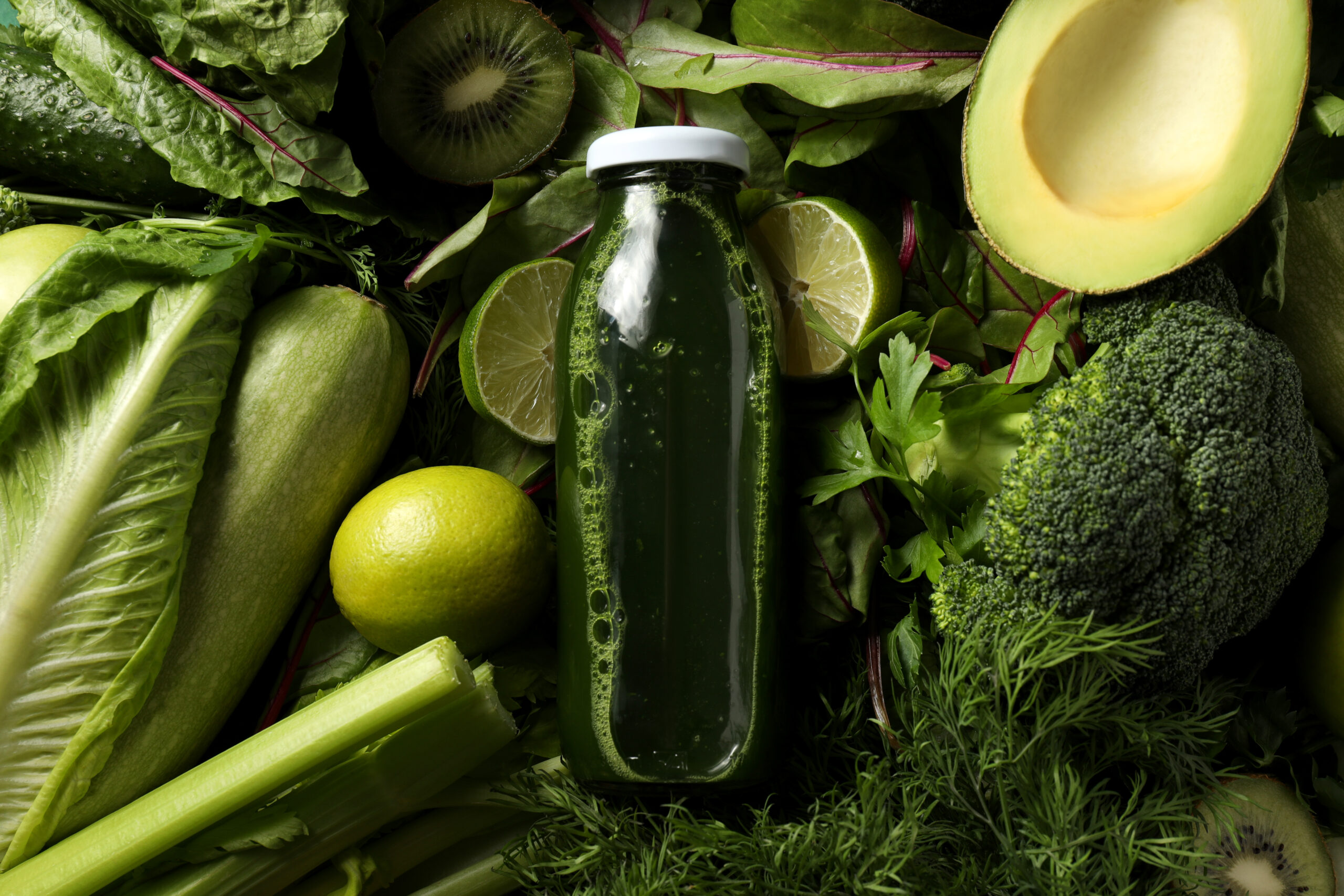Lifestyle
Green Adventures: Zero-Waste Travel Through Vietnam
Discover how to explore Vietnam sustainably with zero-waste travel tips—eco-friendly packing, green stays, plastic-free eating, and ethical adventures!

Vietnam is a breathtaking destination known for its lush landscapes, vibrant cities, and rich cultural heritage. However, as tourism grows, so does its environmental impact. Travelers today are increasingly seeking sustainable ways to explore the world without leaving a heavy footprint.
Zero-waste travel is not just a trend—it’s a necessity. By adopting eco-friendly practices, you can enjoy Vietnam’s beauty while preserving it for future generations. This guide will walk you through how to embark on a green adventure through Vietnam, minimizing waste and maximizing sustainability.
Why Zero-Waste Travel Matters in Vietnam
Vietnam faces significant environmental challenges, including plastic pollution, deforestation, and waste management issues. Popular tourist spots like Halong Bay, Hoi An, and Sa Pa are particularly vulnerable.
By choosing zero-waste travel, you help:
✔️ Reduce plastic pollution in oceans and landfills
✔️ Support local eco-conscious businesses
✔️ Lower your carbon footprint
✔️ Promote sustainable tourism practices
Planning a Zero-Waste Trip to Vietnam
- Packing Sustainably
Before you even board your flight, your zero-waste journey begins with eco-friendly packing:
Reusable Water Bottle—Vietnam has safe refill stations, or you can use a filtered bottle.
Bamboo Cutlery & Stainless Steel Straw—Avoid single-use plastics at street food stalls.
Solid Toiletries—Shampoo bars, toothpaste tablets, and biodegradable soap reduce plastic waste.
Cloth Bags & Beeswax Wraps—Perfect for shopping at local markets without plastic bags.
Solar-Powered Charger—Reduce energy consumption while keeping devices charged.
- Choosing Eco-Friendly Transportation
Transportation is a major contributor to carbon emissions. Here’s how to travel greener in Vietnam:
Trains Over Flights—Vietnam’s Reunification Express is a scenic, low-emission option.
Cycling & Walking—Cities like Hoi An and Hanoi are bike-friendly.
Electric Buses & Green Taxis—Some cities offer eco-friendly transport options.
Carpooling & Ride-Sharing—Apps like Grab allow shared rides to cut emissions.
- Staying at Sustainable Accommodations
Opt for eco-lodges, homestays, and green-certified hotels that prioritize sustainability.
Eco Homestays in Sapa—Many local families offer stays with minimal environmental impact.
Green Hotels in Da Nang & Hoi An—Look for LEED-certified or EarthCheck-approved hotels.
Plastic-Free Policies— Some hostels and guesthouses entirely avoid single-use plastics.
Zero-Waste Eating in Vietnam
Vietnamese cuisine is delicious, but street food often comes with plastic waste. Here’s how to enjoy it sustainably:
- Eat at Local Markets & Plastic-Free Cafés
Hanoi’s Zero Waste Café—a pioneer in sustainable dining.
Farm-to-Table Restaurants—Many in Dalat and Mekong Delta use locally sourced ingredients.
Bring Your Container—Street vendors will happily fill your reusable box.
- Choose Plant-Based & Seasonal Dishes
Vegan Restaurants in Ho Chi Minh City—Reduce your carbon footprint with plant-based meals.
Seasonal Fruits—Vietnam’s tropical fruits like mango, dragon fruit, and rambutan are delicious and low-impact.
- Avoid Single-Use Plastics
Say “Không túi nhựa, làm ơn” (No plastic bag, please) when shopping.
Carry a collapsible silicone cup for Vietnamese iced coffee (cà phê sữa đá).
Exploring Vietnam’s Nature Responsibly
- Ethical Wildlife Tourism
Avoid attractions exploiting animals (e.g., elephant rides, bear bile farms).
Support ethical sanctuaries like Cuc Phuong National Park’s Endangered Primate Rescue Center.
- Leave No Trace in National Parks
Phong Nha-Ke Bang, Cat Tien, and Ba Be Lakes are stunning but fragile.
Pack out all trash, stay on trails, and avoid disturbing wildlife.
- Eco-Friendly Tours & Activities
Kayaking in Halong Bay with Eco Tours—Some operators clean plastic waste while touring.
Community-Based Tourism—Villages in Mai Chau and Pu Luong offer authentic, low-impact experiences.
Supporting Local & Sustainable Businesses
One of the best ways to travel sustainably is by supporting local artisans and eco-friendly brands:
Reusable Bamboo Products—Buy from social enterprises like “Bamboo Village.”
Handmade Souvenirs—Opt for handwoven textiles, ceramic art, and upcycled crafts.
Fair-Trade Coffee—Vietnam is the world’s second-largest coffee producer—choose organic, shade-grown coffee.
Challenges & How to Overcome Them
Zero-waste travel in Vietnam isn’t always easy due to:
Limited recycling infrastructure—carry waste until you find proper disposal.
Cultural differences—Politely refuse plastic and explain your zero-waste goals.
Language barriers—Learn basic Vietnamese phrases or use translation apps.
Conclusion: Travel Light, Leave No Trace
Vietnam’s natural beauty is unparalleled, but it needs protection. By adopting zero-waste travel habits, you contribute to a cleaner, greener future while experiencing the country authentically.
Final Tips for Zero-Waste Travel in Vietnam:
🌿 Refuse, reduce, reuse, recycle, and rot (compost if possible).
🌿 Support eco-tourism initiatives.
🌿 Spread awareness—inspire other travelers to go green!
Are you ready for your green adventure through Vietnam? Pack light, travel sustainably, and leave only footprints behind!

Lifestyle
The Digital Detox Revolution: Rediscovering Joy Through Analog Hobbies
Feeling overwhelmed by screens? Discover the power of a digital detox and explore 10 rewarding analog hobbies to reduce stress, boost creativity, and reclaim your focus.

The average person spends over 7 hours daily staring at screens (Nielsen Report), leading to digital fatigue, anxiety, and poor sleep. A digital detox—intentionally unplugging from devices—can restore mental clarity and improve well-being.
But what should you do instead? Analog hobbies offer a perfect escape—activities that engage your hands, mind, and senses without screens. In this guide, you’ll learn:
✔️ The science behind digital burnout (and why unplugging helps)
✔️ 10 fulfilling analog hobbies to replace screen time
✔️ How to start a digital detox (without feeling lost)
✔️ A 7-day challenge to ease into offline living
Let’s dive in!
Part 1: The Hidden Costs of Digital Overload
How Screens Affect Your Brain & Body
- Increased stress & anxiety (APA Study)
- Poor sleep quality (blue light disrupts melatonin) (Sleep Foundation)
- Reduced attention span (shorter than a goldfish!) (Microsoft Study)
- Less creativity & deep thinking (Cal Newport, Digital Minimalism)
Signs You Need a Digital Detox
🔴 Mindless scrolling for hours
🔴 Feeling anxious without your phone
🔴 Difficulty focusing on real-life conversations
🔴 Constant neck or eye strain
If this sounds familiar, it’s time to unplug and recharge.
Part 2: 10 Rewarding Analog Hobbies to Try
1. Journaling (Pen & Paper Style)
- Benefits: Reduces stress, boosts self-awareness
- Try: morning pages and gratitude journaling
2. Reading Physical Books
- Why it’s better than e-books: Less eye strain, improved retention (NIH Study)
- Recommendations: Classic novels, poetry, or memoirs
3. Gardening (Even in Small Spaces)
- Science-backed perks: Lowers cortisol, increases happiness (University of Exeter)
- Start with: Herbs, succulents, or balcony veggies
4. Cooking from Scratch
- Why analog? Engages all five senses, reduces stress
- Try: Baking bread, fermenting foods, or meal prepping
5. Drawing or Painting
- Boosts: Creativity, mindfulness, and problem-solving
- No talent needed: Doodle, sketch, or try watercolors
6. Playing a Musical Instrument
- Brain benefits: Enhances memory, coordination, and mood (Harvard Health)
- Beginner-friendly: Ukulele, harmonica, or piano
7. Woodworking or DIY Crafts
- Why it’s satisfying: Tangible results, sense of accomplishment
- Starter projects: Birdhouses, candles, or hand-carved spoons
8. Hiking & Nature Walks
- Science says: Nature reduces stress and boosts creativity (Stanford Study)
- Pro tip: Leave your phone behind (or on airplane mode)
9. Board Games & Puzzles
- Social + screen-free fun: Chess, Scrabble, or 1000-piece puzzles
- Cognitive perks: Improves memory and strategic thinking
10. Handwriting Letters
- Why it’s special: Deepens relationships, slows down communication
- Try: Sending postcards to friends or family
Part 3: How to Start Your Digital Detox (Without Quitting Cold Turkey)
Step 1: Set Clear Boundaries
- “No-phone zones” (bedroom, dining table)
- Designated screen-free hours (e.g., after 8 PM)
Step 2: Replace Scroll Time with Analog Activities
- Instead of Instagram →, sketch or read
- Instead of Netflix →, play a board game
Step 3: Use Tech to Detox from Tech
- Apps that help: Freedom (blocks distractions), Forest (grows trees when you stay off your phone)
Step 4: Try a 7-Day Digital Detox Challenge
| Day | Challenge |
|---|---|
| 1 | No social media before noon |
| 2 | Read a book for 30 mins instead of TV |
| 3 | Take a walk without your phone |
| 4 | Write a handwritten letter |
| 5 | Cook a meal from scratch |
| 6 | Play a board game with family |
| 7 | Full day without screens (if possible!) |
Conclusion: Reclaim Your Time & Attention
A digital detox isn’t about abandoning technology—it’s about rebalancing your life. By embracing analog hobbies, you’ll rediscover the joy of slower, more meaningful activities.
Which hobby will you try first? Share in the comments!
Lifestyle
Gut Health & Functional Nutrition: The Science-Backed Guide to Optimal Digestion and Wellness
Discover how gut health and functional nutrition can transform your digestion, immunity, and overall well-being. Learn the best foods, supplements, and lifestyle habits for a healthier gut.

Your gut is often called your “second brain”—and for good reason. Research from Harvard Medical School shows that 70% of your immune system resides in your gut, and an imbalance in gut bacteria can lead to digestive issues, inflammation, and even mood disorders.
Functional nutrition takes a root-cause approach to healing, using food as medicine to restore gut balance. In this guide, you’ll learn:
✔️ The gut-brain connection and why it matters
✔️ Top signs of an unhealthy gut (and how to fix them)
✔️ Best foods for gut healing (plus what to avoid)
✔️ Functional nutrition strategies to optimize digestion
✔️ A 7-day gut-healing meal plan
Let’s dive in!
Part 1: The Gut-Brain Connection – Why Your Gut Controls More Than Digestion
How Your Gut Impacts Overall Health
Your gut microbiome—home to trillions of bacteria—plays a crucial role in:
- Digestion & nutrient absorption (NIH Study)
- Immune function (Cleveland Clinic)
- Mental health (anxiety & depression) (Nature Journal)
- Metabolism & weight management (Mayo Clinic)
5 Warning Signs of an Unhealthy Gut
- Bloating, gas, or constipation
- Food intolerances (like gluten or dairy)
- Frequent infections or weak immunity
- Skin issues (eczema, acne)
- Brain fog & mood swings
If you experience these, your gut may need attention!
Part 2: Functional Nutrition – The Best Foods for Gut Healing
Top 5 Gut-Healing Superfoods
- Bone Broth – Rich in collagen and glutamine, which repair the gut lining (Healthline)
- Fermented Foods – Sauerkraut, kimchi, and kefir boost probiotics (Harvard Health)
- Fiber-Rich Veggies – Asparagus, leeks, and garlic feed good bacteria (NIH Study)
- Omega-3 Fats – Wild salmon and flaxseeds reduce gut inflammation (American Heart Association)
- Prebiotic Foods – Bananas, apples, and chicory root support microbiome diversity (WebMD)
Foods That Harm Your Gut
🚫 Processed sugar (feeds bad bacteria)
🚫 Artificial sweeteners (disrupt microbiome)
🚫 Industrial seed oils (promote inflammation)
🚫 Gluten & dairy (if sensitive)
Part 3: Functional Nutrition Strategies for Optimal Gut Health
1. Eat More Probiotic & Prebiotic Foods
- Probiotics (live bacteria): Yogurt, kombucha, miso
- Prebiotics (fiber for bacteria): Onions, garlic, oats
2. Try an Elimination Diet
Remove common irritants (gluten, dairy, soy) for 30 days, then reintroduce them to identify sensitivities.
3. Support Digestion with Supplements
- L-Glutamine (repairs gut lining)
- Digestive enzymes (improve nutrient absorption)
- Colostrum (boosts gut immunity)
4. Manage Stress for Better Digestion
Chronic stress worsens leaky gut (APA Study). Try:
- Mindful eating (chew slowly)
- Deep breathing exercises
- Daily movement (walking, yoga)
Part 4: 7-Day Gut-Healing Meal Plan
Day 1
- Breakfast: Chia pudding with almond milk & berries
- Lunch: Grilled salmon with quinoa & steamed veggies
- Dinner: Bone broth soup with turmeric
Day 2
- Breakfast: Smoothie with spinach, banana, and flaxseeds
- Lunch: Fermented kimchi with brown rice
- Dinner: Baked chicken with roasted sweet potatoes
(Continue for Days 3-7 with similar gut-friendly meals.)
Conclusion: Heal Your Gut, Transform Your Health
Your gut health impacts everything—from digestion to immunity, mood, and energy. By following functional nutrition principles, you can restore balance naturally.
Ready to start? Try the 7-day meal plan and notice the difference in how you feel!
Lifestyle
The Ultimate Guide to Hormone-Balancing Routines: 10 Science-Backed Habits for Optimal Health
Discover proven hormone-balancing routines to boost energy, improve mood, and support metabolism naturally. Learn the best foods, exercises, and daily habits for hormonal harmony from leading health authorities.

Introduction: Why Hormone Balance is the Key to Feeling Your Best
Hormones are your body’s chemical messengers, controlling everything from metabolism and mood to sleep and stress response. When they’re balanced, you feel energetic, mentally sharp, and emotionally stable. But when they’re out of sync, you may experience fatigue, weight gain, mood swings, and other frustrating symptoms.
The good news? You can restore hormonal harmony naturally with simple, consistent hormone-balancing routines. In this comprehensive guide, we’ll explore:
✔️ How hormones work and signs of imbalance
✔️ 10 science-backed habits to regulate hormones naturally
✔️ The best foods for hormonal health
✔️ A sample daily routine for optimal balance
Let’s dive in!
Part 1: Understanding Hormonal Imbalance – Signs & Causes
What Are Hormones, and Why Do They Matter?
Hormones are chemicals produced by glands like the thyroid, adrenals, and ovaries/testes. They regulate:
- Metabolism (thyroid hormones)
- Stress response (cortisol)
- Sleep-wake cycles (melatonin)
- Reproductive health (estrogen, progesterone, testosterone)
When these hormones are imbalanced, you may experience:
- Chronic fatigue
- Weight gain (especially around the belly)
- Mood swings & anxiety
- Insomnia or poor sleep
- Irregular periods (for women)
- Low libido
Common Causes of Hormonal Imbalance
- Chronic stress (elevated cortisol disrupts other hormones)
- Poor sleep (disrupts melatonin and growth hormone)
- Processed foods & sugar (spikes insulin)
- Toxins (plastics and pesticides act as endocrine disruptors)
- Sedentary lifestyle (affects insulin sensitivity)
Part 2: 10 Science-Backed Hormone-Balancing Routines
1. Start Your Day with Sunlight
Exposure to natural light within 30 minutes of waking helps regulate cortisol (your stress hormone) and melatonin (sleep hormone). Try:
- A 10-minute morning walk
- Drinking coffee outside (skip sunglasses for best effects)
2. Eat a Protein-Rich Breakfast
Protein stabilizes blood sugar and supports thyroid function. Great options:
- Eggs
- Greek yogurt with nuts
- Chia seed pudding
3. Practice Stress-Reduction Techniques
Chronic stress raises cortisol, which disrupts other hormones. Try:
- Deep breathing (4-7-8 method)
- Yoga or meditation (even 10 minutes helps)
- Adaptogenic herbs (like ashwagandha)
4. Strength Train 2-3x Per Week
Resistance training boosts growth hormone and improves insulin sensitivity. Focus on:
- Squats
- Deadlifts
- Push-ups
5. Prioritize Sleep (7-9 Hours Nightly)
Poor sleep wreaks havoc on cortisol, leptin (hunger hormone), and ghrelin (appetite hormone). Tips:
- Avoid screens 1 hour before bed
- Keep your room cool (65°F is ideal)
- Try magnesium glycinate for relaxation
6. Eat Healthy Fats Daily
Fats are essential for producing hormones. Best sources:
- Avocados
- Salmon (rich in omega-3s)
- Olive oil
7. Limit Sugar & Refined Carbs
Excess sugar spikes insulin, leading to weight gain and PCOS. Swap for:
- Berries (low-glycemic)
- Sweet potatoes (fiber-rich)
8. Support Gut Health
A healthy gut helps metabolize hormones like estrogen. Try:
- Probiotic foods (sauerkraut, kefir)
- Fiber-rich veggies (broccoli, Brussels sprouts)
9. Reduce Toxin Exposure
Endocrine disruptors in plastics and cosmetics mimic hormones. Avoid:
- BPA plastics
- Parabens in skincare
10. Sync with Your Circadian Rhythm
Going to bed and waking at the same time regulates cortisol and melatonin.
Part 3: Hormone-Balancing Foods to Eat Daily
| Food | Hormones It Supports |
|---|---|
| Flaxseeds | Estrogen balance |
| Brazil nuts | Thyroid (selenium) |
| Bone broth | Gut health & cortisol |
| Leafy greens | Detoxification |
Sample Daily Hormone-Balancing Routine
Morning:
- 7 AM: Wake up, sunlight exposure
- 7:30 AM: Protein breakfast (eggs + avocado)
- 8 AM: 10-minute walk
Afternoon:
- 12 PM: Lunch (salmon + quinoa + greens)
- 3 PM: Herbal tea (chamomile for stress)
Evening:
- 6 PM: Strength training or yoga
- 8 PM: Dinner (turkey + sweet potato)
- 10 PM: Wind down (no screens, magnesium supplement)
Conclusion: Small Changes, Big Hormonal Shifts
You don’t need extreme diets or expensive supplements to balance your hormones. By incorporating these 10 science-backed routines, you can restore energy, improve mood, and boost metabolism naturally.
Which habit will you try first? Let us know in the comments!
-

 Business5 months ago
Business5 months agoHow to Fund Your Startup Without Giving Away Equity
-

 Lifestyle5 months ago
Lifestyle5 months agoTrek & Taste: Hidden Trails and Local Eats in Europe
-

 Entertainment5 months ago
Entertainment5 months agoMission: Impossible – The Final Reckoning Reveals Stunning Arctic Location in New Behind-the-Scenes Featurette
-

 Entertainment5 months ago
Entertainment5 months agoThe Ultimate Guide to Game Reviews and Walkthroughs: Master Your Favorite Games
-

 Tech5 months ago
Tech5 months agoWeb Development in 2025: Trends, Technologies & Best Practices
-

 Lifestyle5 months ago
Lifestyle5 months agoThe Digital Detox Revolution: Rediscovering Joy Through Analog Hobbies
-

 Tech5 months ago
Tech5 months ago6G Research and Development: The Future of Connectivity (2025 Update)
-

 Business5 months ago
Business5 months agoWhy Consumers Are Choosing Ethical Brands And How You Can Be One


